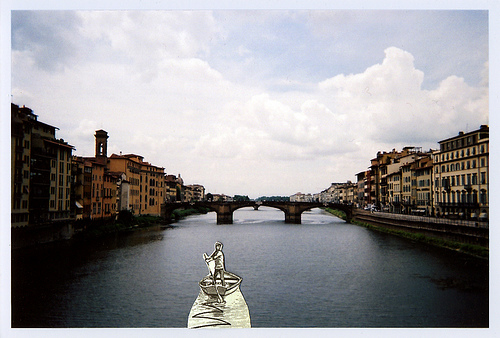I wanted to go places.
I saw to my bucket list then: Rome, Florence and Venice, Madrid and Barcelona, and London. I must have visited the Duomo. I have a hazy picture of pigeons atop my head. Perhaps I was in Florence. There’s a snapshot of the Arno river and I imagine I saw David. But that holiday was a flurry of sites and scenes. And the only vivid memory I have is running after a train, the stuffed Samsonite with a busted zipper on my back.
And then I learned how to take a trip down memory lane.
It isn’t that iconic spot. It isn’t the must-see, the X you marked on your guidebook. Those, you accomplish for pictures that end up on the pianoforte. It’s not even the towers and gargoyles, or the river running through it. Your moment there would often be swift, as you follow the crowd to the next must-do. And if not for the snapshot, you won’t even remember being there.
Instead, you will remember people.
Look back on your night out with the locals, as they shucked and hurled oyster shells to the floor. And recall that for breakfast, your friends mopped the bread with olive oil and a slice of tomato, and then sprinkled it with rock salt. You will remember feelings. You’ll summon pain and discomfort, the uncertainty of being lost. When you entered the side street—so you were neither on your marked trail nor would you ever find Shakespeare and Co.—but you were wet and cold, and that this was the square where you first saw a musician begging for coins. How you scalded yourself in the shower because the dials said C for hot. Or how the peppers metamorphosed to a sweet cream as it hit your tongue. And you will remember life stories. You’ll think of the harsh life of the Fjord that made for stunning sceneries but left you shivering and reeking of fish.
And so began my art of slow travelling. I would search out sleepy hamlets or villages with narrow streets. I stayed put, opting for two places (instead of five) for two weeks, settling on an easy romance instead of a whirlwind affair. Stayed in B&Bs, cottages and working farms, so I could linger with the hosts for breakfast, and then toast with them at night. Sketched out routes but took to beguiling side streets, or wandered aimlessly. Sat on benches or dallied in squares, returned smiles or chatted with strangers.
I’d try to catch people on their way to work, ogling the men with their hats, who gulped Prosecco and aperol in place of coffee. And I’d go on a hunt for little restaurants where the husband cooks while his wife and children serve you large platters of what wasn’t in the menu but in the garden. And then I’d explore the village market, squares with old ladies and their shopping trolleys, listen to them banter about le pâté and les paupiettes, while I’m gaping at the half-alive bird hanging by its blue feet. I’d make my way around town by foot, or journey to little known places in buses and trains like the locals do. There, I would glimpse the everyday life of a stranger. And sometimes, I would do nothing at all.
And as I stopped looking at my maps and must-lists, I reshaped my relationship to a place and to time. It pays not to follow the way of the crowd. What you lose in photographs of hyped-up destinations and tick-off lists, you earn in real time.
Because now I have a sense of a place by its village square. I know what they have for breakfast and what they do after lunch. Why they decorate the rooftops with storks and nests, or why the yearly Mistral determines the shape of windows. The way they haggle over truffles like gold. How they have put an end to dairy farming after 100 years, desperate for a vacation just like I do. How cuckoo clocks were born out of bored farmers in wintertime. Why the Italian fancies a Filipina wife and if I could please find him someone to love?
There’s just one language for humanity.
Everywhere, people will marvel at the different life you have. Everywhere, there’s a story to tell, and a story to hear.
You don’t have to empty your bucket list or see those 100 places before you die. There is time, when it is spent slowly. Find a place, know it well. Map it out, get lost too. Delight in the familiar, get a kick out of the unexpected. Make plans, disobey them. And then earn the true stories, the goodness of people, the soul of a place: and take it home with you. You will see how time stands still. And you can keep walking.
“A dominant impulse on encountering beauty is to wish to hold on to it, to possess it and give it weight in one’s life. There is an urge to say, ‘I was here, I saw this and it mattered to me.” ~ Alain de Botton, The Art of Travel
Author: Paula Zayco Aberasturi
Editor: Catherine Monkman
Image: Theverypage/Flickr


 Share on bsky
Share on bsky





Read 0 comments and reply